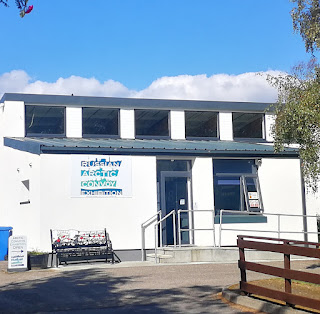A few pics from Jimi's motorcycle run up Scotland's NW coast. Glorious sunshine, jaw-dropping scenery, brilliant riding roads and overdue reunions with dear, dear friends. Jimi does love Torridon so.
A particular highlight of this trip was Jimi's visit to the WW2 Russian Arctic Convoy memorial and museum at Loch Ewe. He took his pipes and played a few Pibrochs in honour of the thousands of British and Allied seamen (both navy and merchant) who between 1941 and 1945 sailed from this loch (Loch Ewe is of course a sea loch, deep enough to anchor heavy cargo ships) to Murmansk and Archangel in Northern Russia with supplies for the Russian war effort.
Over 3,000 of these sailors perished in attacks by German Luftwaffe and U-boats. If fires and exposions caused by torpedoes and incendiary bombs failed to kill them, the freezing waters of the Arctic Ocean definitely would. Grim.
Britain's war time leader Sir Winston Churchill described the route taken by the Arctic convoys as "the worst journey in the world".
In Russia, to this day, veterans of these convoy missions, and all who gave their lives in the cruel Arctic seas, are revered as national heroes.
"It was moving to meet the family of one of these brave men while I piped at the Rubha nan Sasan memorial at the mouth of Loch Ewe" said Jimi. "They were delighted to hear I was a 'Jimmy', for he had been a 'Jimmy' too they said."
A 21-year-old merchant seaman and a Geordie (from Newcastle in NE England) this particular 'Jimmy' had sailed on and, fortunately, survived two convoy missions to northern Russia. Like most of his generation he never talked much about his experiences. However, his son, now a healthy looking 67 and a Grandpa, does remember Jimmy once saying near the end of his life, how he and his ship mates had lived in constant fear of being torpedoed and capsizing. He spoke of the dreaded ''all hands on deck' shouts as crews battled to break up ice in ''finger snapping'' freezing conditions to prevent ships capsizing from excess weight.
"It was grand and perhaps fitting to meet Jimmy's 21st Century descendants" added Jimi. "Lovely family. He would be very proud."
Following the trip out to Rubha nan Sasan, Jimi headed round to the Arctic Convoy museum at Aultbea on the northern shore of Loch Ewe. "This is a really impressive museum run by local volunteers and I would urge all passers-by with an interest in history to consider stopping there for a look around. Admittance fee of £5 is great value."
Jimi learned something new at the museum - a squadron of Hawker Hurricane fighter planes, complete with pilots and mechanics were on the first British convoy ships to dock at Murmansk. These men spent almost a year flying missions and fighting alongside Soviet forces on the Eastern front while also training Russian pilots and technicians up to Hurricane spec.
"It was good to be in the air again fighting Messerschmitts" recalled one British Hurricane pilot veteran.
"We were used to them. We knew we had a fighting chance, unlike in the ice seas where we were sitting ducks, waiting to be torpedoed."
.jpg)




.jpg)
.jpg)
.jpg)
No comments:
Post a Comment